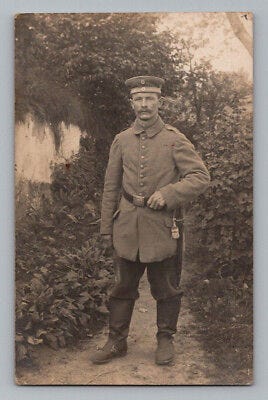WW1 German Bayonet Knots
The German army during World War I used bayonet knots as a way to identify different units and ranks within the military. These knots were worn on the uniform and were made of colored cord or ribbon. The colors and patterns of the knots were used to indicate the soldier's unit, rank, and branch of service. For example, a red knot with a white center was worn by officers, while a green knot was worn by non-commissioned officers. Additionally, a black and white knot was worn by soldiers in the artillery branch. The use of bayonet knots in the German army during World War I was similar to the use of shoulder straps and collar tabs in identifying officers and non-commissioned officers.
Here is a list of some of the colors and their corresponding meanings of bayonet knots used in the German army during World War I:
Red with white center: Officers
Green: Non-commissioned officers
Black and white: Artillery branch
Black and red: Engineers
Black and yellow: Signals
Black and green: Medical
Black and blue: Transportation
White: Musicians
It's worth noting that this is not an exhaustive list and there were variations depending on the unit, region or period during the war. Additionally, the use of bayonet knots was not universal across the German army and some units did not use them at all.







